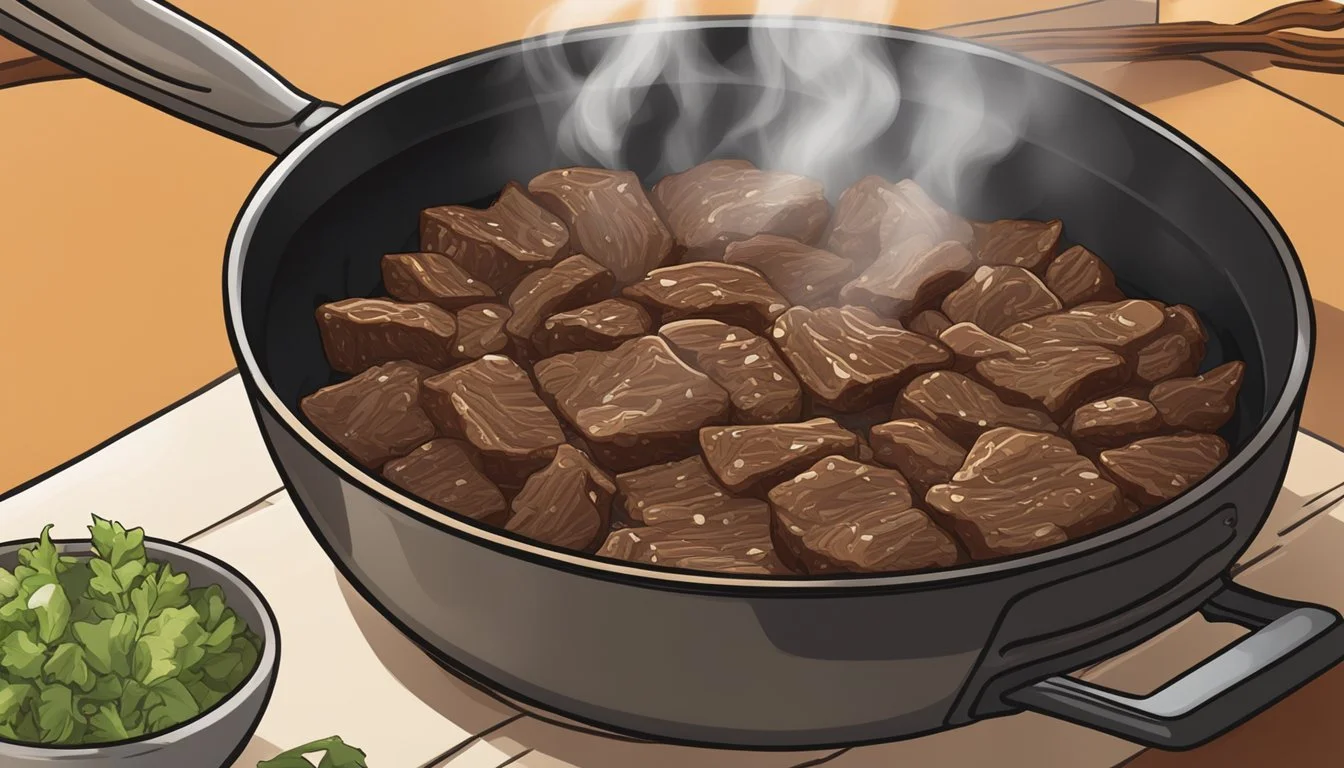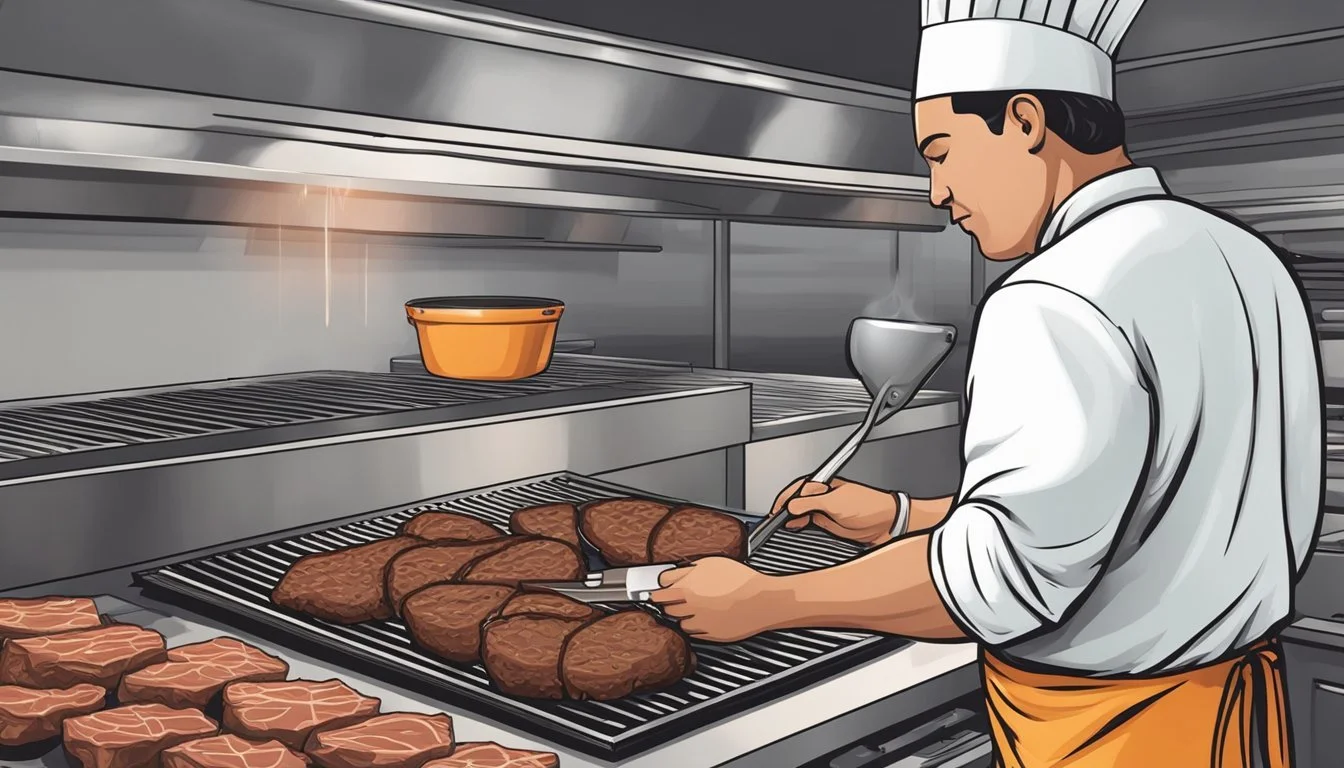How to Reheat Beef Barbacoa
Expert Tips for Perfect Results
Beef barbacoa, a traditional Mexican dish, is beloved for its flavorful and tender meat. When it comes to reheating, maintaining that delicious taste and succulent texture is crucial. With various methods to consider, adding moisture is key to preventing dryness and preserving the rich flavors.
Reheating barbacoa can be done efficiently using a slow cooker, oven, or stovetop. Each method has its own merits, but the principle remains the same: incorporate beef broth, water, or a splash of tomato sauce to keep the meat juicy. By following these simple tips, anyone can enjoy the delightful experience of eating beef barbacoa that tastes just as good as when it was first made.
Those who appreciate the depth of flavor in this Mexican dish will find these reheating techniques invaluable. From the seasoned home cook to the barbacoa enthusiast, there's something here for everyone looking to savor every bite of their beef barbacoa leftovers.
Understanding Beef Barbacoa
Beef barbacoa, a flavorful and succulent dish, boasts deep-rooted traditions and a specific set of ingredients that define its rich taste. This guide will explore the fundamentals and traditional components that make barbacoa a beloved meal.
The Basics of Barbacoa
Barbacoa is a method of cooking meat that originated in Mexico. Traditionally, this involves slow-cooking beef, often in an underground pit, which lends to its tender texture. Beef chuck roast is a common cut used due to its balance of meat and fat, which enhances flavor and juiciness during the long cooking process.
In modern kitchens, this traditional pit method is often replaced with ovens or slow cookers. These methods still capture the rich and savory essence of barbacoa while providing convenience. Slow and low heat is key to breaking down the beef’s connective tissues, resulting in a melt-in-the-mouth experience.
Traditional Ingredients and Flavors
Beef barbacoa features a blend of spices and ingredients that create its distinct flavor profile. Key components include:
Cumin: Adds a warm and earthy taste.
Oregano: With its slightly bitter edge, it complements the beef.
Lime juice: Provides a tangy brightness.
Chipotle peppers in adobo sauce: These peppers bring heat and a smokey depth.
Garlic: Essential for its aromatic and pungent qualities.
Cilantro: Adds a fresh, slightly citrusy note.
Seasoning the beef chuck roast with these ingredients ensures that each bite is imbued with the authentic flavors synonymous with traditional barbacoa. The combination of spices and slow-cooked beef creates a rich tapestry of taste that is both complex and satisfying.
Preparing Beef Barbacoa for Reheating
Proper preparation of beef barbacoa before reheating ensures it retains its flavor and texture. Key steps include storing leftovers correctly and allowing the barbacoa to reach room temperature.
Storing Leftovers Properly
It is essential to store the barbacoa in an airtight container to maintain its moisture content. After allowing the meat to cool to room temperature, place it in a container made from glass or BPA-free plastic.
Refrigeration Tips:
Label the container with the date of storage.
Store in the fridge for up to 4-5 days.
For extended storage, freeze the barbacoa. Use freezer-safe containers or vacuum-sealed bags to prevent freezer burn. The barbacoa can be frozen for 1 to 3 months without significant loss of quality.
Bringing Barbacoa to Room Temperature
Before reheating, allow the barbacoa leftovers to come to room temperature. This step is crucial for achieving an even reheating process and helps prevent overcooking. Remove the container from the fridge and let it sit on the counter for about 30-60 minutes.
If the barbacoa was frozen, transfer it to the fridge the night before to thaw gradually. Rapid thawing isn't recommended as it can compromise the texture and safety of the meat. Ensuring the barbacoa is adequately thawed minimizes the risk of cold spots during reheating.
Reheating Techniques for Beef Barbacoa
When reheating beef barbacoa, maintaining its rich flavors and tender textures is crucial. Here are several methods to help you achieve delicious results.
Oven Reheating Method
To reheat beef barbacoa in the oven, preheat the oven to 350°F. Remove the barbacoa from the refrigerator and place it in an oven-safe dish. Add some beef broth or water to keep it moist, roughly half a cup per pound of meat.
Cover the dish with aluminum foil to lock in moisture. Heat the barbacoa for about 20-25 minutes, or until it reaches an internal temperature of 165°F. Stir occasionally to distribute the heat evenly.
Stovetop Reheating Method
When using the stovetop, place the barbacoa in a large skillet. Add half a cup of beef broth or water per pound of meat. Set the burner to medium-low heat and simmer gently. Stir occasionally to avoid sticking.
Reheat until the meat reaches 165°F. Avoid high heat to prevent drying out the meat. This method offers a quick and convenient way to enjoy deliciously warm barbacoa.
Microwave Reheating Method
For microwaving, transfer the barbacoa to a microwave-safe dish. Add a small amount of liquid, such as beef broth or water, to keep it moist. Cover the dish with a microwave-safe lid or a damp paper towel to prevent drying out.
Heat on medium power for 1-2 minutes, stir, and check the temperature. Continue heating in 30-second intervals until the barbacoa is evenly warmed and reaches 165°F.
Using a Slow Cooker or Dutch Oven
For a slow cooker or Dutch oven, start by placing the barbacoa in the cooking vessel. Add enough beef broth or water to prevent drying out. Set the slow cooker to low heat or preheat the Dutch oven on a low setting.
Heat the barbacoa for 2-3 hours or until it reaches the desired temperature of 165°F. This method is perfect for reheating large batches, ensuring the meat remains juicy and flavorful.
Retaining Moisture and Flavor While Reheating
To keep beef barbacoa juicy and flavorful during reheating, it is crucial to use the right methods and ingredients. These strategies will help maintain the moisture and enhance the overall taste.
Adding Liquids and Covering the Dish
Adding liquids such as beef broth or water is essential. Place the barbacoa in an oven-safe dish and add enough liquid to create moisture. Using beef broth is recommended because it enhances the flavor.
Covering the dish with aluminum foil ensures that the steam is trapped inside, allowing the meat to stay moist and tender. For stovetop methods, simmering the beef in broth can also achieve similar results.
Adjusting Heat and Time
Using low heat settings is critical to prevent the beef from drying out. When reheating in an oven, set the temperature to around 325°F (163°C). This slow reheating prevents moisture loss.
Microwave reheating methods should be limited to small portions to avoid uneven heating. On the stovetop, use low heat and allow the meat to warm gently, flipping it occasionally to ensure even warmth.
Serving Reheated Beef Barbacoa
Reheating beef barbacoa is one part of the process; pairing it with the right accompaniments and adding final touches can elevate the dish.
Appropriate Accompaniments
When serving reheated beef barbacoa, tacos and burritos are popular choices. Fill warm tortillas with the juicy meat, and add a variety of toppings. Pico de gallo, salsa, and freshly chopped cilantro provide a burst of freshness. Nachos with melted cheese also pair well, utilizing the barbacoa as a hearty topping.
Salads are another option, combining avocado, lime juice, and mixed greens. Mexican rice on the side offers a satisfying, starchy balance. Each accompanying item should complement the rich, savory taste of the beef without overpowering it.
Final Touches for Enhanced Flavor
To enhance the flavor of reheated beef barbacoa, consider adding chipotle peppers in adobo sauce for extra smokiness. Drizzle freshly squeezed lime juice over the meat to brighten its flavors. A sprinkle of cilantro adds a herbaceous note that lifts the dish.
Serve lime wedges alongside for guests to add as desired. If making tacos or burritos, a spoonful of guacamole or diced avocado can provide a creamy contrast. Ensure any added elements complement and don’t mask the barbacoa's robust, tender quality.
Safety and Quality Control
When reheating beef barbacoa, it's essential to prioritize both food safety and maintaining the quality of the dish. This involves monitoring the internal temperature and being cautious to avoid overheating, which can impact tenderness.
Checking for Proper Temperature
Ensuring that the barbacoa reaches a safe internal temperature is crucial for food safety. According to food safety guidelines, beef should reach an internal temperature of 165°F (74°C) when reheated. Use a food thermometer to measure the temperature at the thickest part of the meat.
Avoid guessing the temperature, as underheated beef can harbor harmful bacteria. Combining this practice with a consistent heat source, like an oven or skillet, can help achieve the best results. Always check the thermometer reading before serving to ensure it reaches the recommended safe temperature.
Avoiding Overheating
Overheating beef barbacoa can cause it to become dry and lose its desirable tenderness. When using an oven, keep the heat at a moderate level, typically around 300°F (150°C). Monitoring the barbacoa during the reheating process can help prevent overcooking.
Stirring occasionally when using a skillet can distribute heat more evenly and reduce the risk of overheating. Adding a small amount of liquid, such as broth, can also help maintain moisture. These practices contribute to a tender and juicy reheated barbacoa, enhancing the dining experience.
Additional Tips and Tricks
When reheating beef barbacoa, consider these tips for using leftovers creatively and freezing for future convenience.
Using Leftovers Creatively
Leftover beef barbacoa is versatile and can be transformed into various dishes for a new meal experience.
Add barbacoa to tacos, burritos, or quesadillas. Top salads with shredded barbacoa for a protein boost. Mix with scrambled eggs for a hearty breakfast option. Use in enchiladas, on nachos, or as a filling for tamales. Refresh the flavor by adding fresh herbs, lime juice, or additional spices.
If the meat seems dry, add a splash of broth or a squeeze of lime before heating. This maintains moisture and enhances flavor. Reinventing barbacoa leftovers can be both practical and delicious.
Freezing and Thawing for Future Use
Freezing leftover barbacoa can extend its shelf life and provide a quick meal option.
Store cooled barbacoa in an airtight container or heavy-duty freezer bag. Label with the date to keep track of its freshness. Freeze in portion-sized amounts to make thawing and reheating easier.
To thaw, place the barbacoa in the refrigerator overnight. Reheat in the oven or on the stovetop with a bit of broth to retain moisture. For a quicker thaw, use the defrost setting on a microwave before reheating. Proper storage and thawing ensure the barbacoa maintains its tender texture and robust flavor.
By following these methods, beef barbacoa remains a convenient, flavorful option for various meals.




